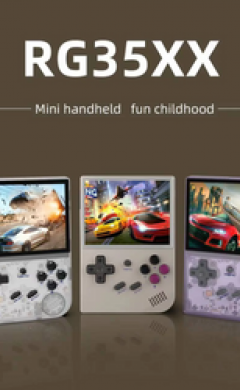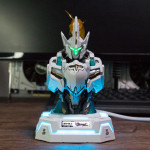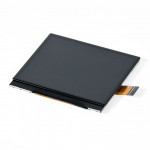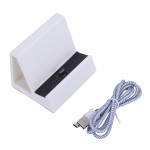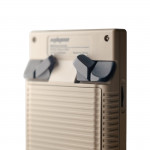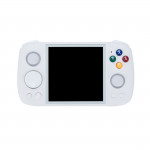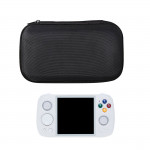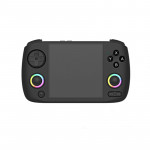RH Reviews: The Anbernic RG405M
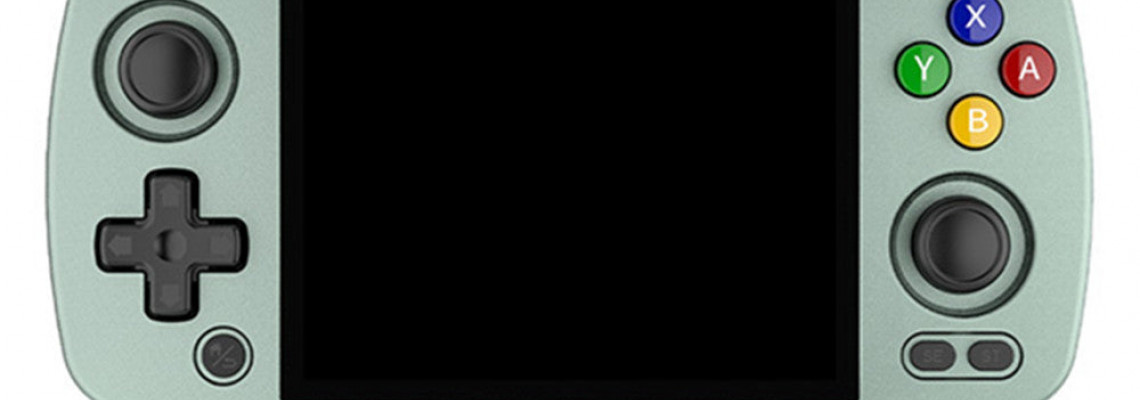
c
Greetings from another edition. "An additional Anbernic device has been released, marking the end of another month!" The Anbernic 405m, the newest and best device the firm offers, is our honoured guest for this venture into the new device pool. With its elegant aluminium casing, this gadget is a testament to quality. Its solid-looking buttons, staggereanalogueog sticks, and rounded edges almost implore you to hold on to it and never let go. Overall, it looks like a standard Anbernic gadget, but there is enough variation that you might need to check again to be sure. Following the unexpected success of the 35xx, the 405m is the next big thing, yet it doesn't resemble the vertical, plastic handheld that won our hearts so recently. It has a larger screen, a different operating system, an analogue stick, a horizontal orientation, and a more powerful processor. However, its remarkable performance and good ergonomics make it a substantial addition to the Anbernic range.
Even though this aluminium all-star has many reasons to be celebrated, it also has certain drawbacks—possibly more than one might think, considering all the unrestrained kudos I gave in the previous paragraph. The 405m might or might not be for you, depending on your preferred D-pad positioning, screen resolution, and love or hate for Skittles (I'll explain later). Is the size appropriate? Is the screen sufficiently large? Does the metal heat up or cool down like all metal handhelds? As we go down the retro handheld rabbit hole again, I will try to address both the difficult and the glaringly apparent questions. Since this tea party will likely take a while, I hope you wear your fluffy blue dress on this joyous birthday.
Hardware
I am reminded of the 353m by the Anbernic 405m. Except for the left stick's positioning, it is remarkably similar in appearance to the purple chocolate bar that contained Anbernic's original set of hall-sensoranalogue sticks. The sea-foam green or black CNC aluminium shell is almost 2/3 of an inch thick, 3 inches tall, and nearly 6.5 inches across at its widest point. A 4′′ 640x480 resolution IPS screen with an obvious glass lens and tiny black bezels sits in the centre. As usual, the D-pad, analogue sticks, and face buttons encircle the glass rectangle and give the handheld's front a well-balanced appearance. Since the buttons are relatively close together, my first impression upon seeing the front was that it was a little crowded; however, there is more information under the Buttons section.
The traditional 4-button arrangement is situated just above the low-sitting right analogue stick, quite next to it, while Start and Select are tucked away beneath it. From the top analogue stick to the D-pad and, ultimately, to the Home button closest to the screen, the left side of the screen descends. That's right, the analogue stick is ON-TOP. I get that this is a sensitive topic for some, but please, just relax and let me finish my neutral evaluation, damn you! Alright, where was I? The top, ah! In-line L1/L2, a cooling vent, a USB-C/DC port, a volume rocker, the power button, and R1/R2 are located on the upper edge from left to right. There are no buttons or features on the sides. On one side of the lower border are the downward-firing speakers, while to the right of the centre are a micro-SD and a headphone connection.
The "premier" feeling Anbernic strives for with these metal shells is enhanced by the aluminium's silky, opulent feel and slight heaviness. I've previously said I'm not a big admirer of these kinds of shells, but wow. I can't resist having fun with this one. The device's weight isn't so heavy that it gets unpleasant, and its rounded edges and sides don't dig into your hand. Although I haven't seen the black one in person, I think the colours they selected are fantastic, and I'll say that this hardware is hot. Apart from the Skittles portion, that is.
The Screen
"Observe me! Hey, I'm in the centre right here! I glow, and I'm shiny! Almost all of the vintage handhelds are available.
Most displays currently available on the market are summed up in one remark. Many excellent ones are available, and even the lower-end ones are of good enough quality to offer a fun gaming experience. I sometimes find it difficult to distinguish between different screens. Evaluating the 405 mm 4-inch IPS screen was difficult. Aside from PSP games, older games benefit significantly from the 4:3 aspect ratio. It's dim overall, although it gets bright enough. I usually keep my Android devices at 50% brightness, which is more than enough, but on the 405m, I had to adjust it to more like 75–80% to get the same result. The screen was stunning when I played N64 games, but I thought it was a little fuzzy and unsuitable for that use when I was streaming via Game Pass.
The size is ideal, and a smaller screen than an RP3 can make the device's overall design a little more portable. PSP was the only retro system I tested that made me wish it were higher quality. That system does not work well at 640 x 480. I suppose I'm attempting to convey that this screen falls somewhere between "it's great" and "it could be better." Although I wouldn't classify it as top-tier, it's above ordinary. It is hard to knock something like N64 when it appears straightforward, vivid, and vibrant. However, I wouldn't use this much as a gaming streaming device, even with the staggered analogue sticks. I won't say I adore this screen, but I also can't say I despise it. If you are comfortable with a little bit of low brightness, this screen is ideal if you plan to play primarily retro games (4:3 systems in particular).
The Buttons
One more Anbernic, another fantastic set of buttons. That's the long and short of it. The button-using experience on the 405m is excellent, ranging from the standard rubber membrane buttons to the snappy, clicky Start/Select/Home buttons and the comfortable (albeit tiny), smoothly turning sticks. The multicoloured (SKITTLES!) face buttons on my model are a delight, even though their colour scheme does not match the rest of the device. When pressed down, they make a firm touch, have just the right amount of "pop" when depressed and released, and don't wobble or tremble when left alone. Using our meaty little forefingers to grasp the shoulder buttons and trigger feels ok as we proceed. Reaching and using the L2/R2 buttons is easier because they are smaller and extend slightly beyond the shell. It's a good decision, but I still like them stacked; that's my preference for vintage handhelds: buttons with stacked shoulders are better. Most of us have recently heard the popular phrase used to describe these devices: hall sticks or, more specifically, hall-sensor analogue sticks. They employ some fairy magic, perhaps lasers, if you haven't heard of them. I believe it to be magnets! In any case, they sense inputs using magnets rather than directly touching components, which means they last longer and cause less drift. I know, sweet. The ones on this handheld click provide L3/R3 inputs and have a good amount of grip. Their only drawback is that they are about the same size as Switch Lite sticks, which is bad because I have some fat-padded thumbs. One advantage is that they are sufficiently recessed and do not significantly impair pocketability. My favourite handheld feature is the buttons, just like with most Anbernic gadgets I've used.
The Internals
Chips: We all adore them. Why wouldn't we? We even have a mascot (thanks to Steve) that is all about the crunchy treats. "What chip is best, which one is the strongest, which one is your favourite?" is a typical conversation around the RH water cooler, and I adore it. Naturally, people want to know which chip is in the 405m. The Unisoc T618 64-bit octa-core processor has two A75S and six A55S operating at 2.0GHz. Are you aware of what that implies? It seems impressive, but I do not have a single clue. It is a good enough chip to run games like Grand Theft Auto and PlayStation 2, provided they are not too demanding. It is well-established because it can be found in devices like the RP3+ and the PK X18S, the former of which has been extremely popular.
A Mali G52 GPU appears to handle your visuals, operating at 850 MHz. Together with an additional pair of 4GB LPDDR4 RAM and 128GB of onboard storage, that combination creates a strong internal package. I like to use my own SD card, especially on Android devices, but you can buy a 128GB or 256GB card to go with the device, which will be loaded with games. Storage shouldn't be an issue either way. In terms of wireless connectivity, Bluetooth 5.0 and Wi-Fi are included, which is fantastic. The sound originates from the front-edge-oriented speakers we discussed before. The sound is clear and piercing, and they send it in a decent direction. They don't get very loud, which is the only problem I noticed. They get loud enough, but you might be disappointed if you were hoping to jam out to the incredible songs in the DKC series on the SNES. Let's move on to the battery, my favourite internal component. The tiny juice box powers all of the goodies inside the shell. The one that is part of the 405m is fantastic. The battery life is remarkable, with a 4500mAh Li-Po battery that can play for approximately 7 hours and charge for 2 hours. This is the best feature of the internals, but the OS's excellent sleep capabilities undoubtedly enhance it. Battery life is a significant consideration for me because I like to carry a device around in my pocket, and the 405m excels in this regard. This gadget has a powerful heart.
Software
Have you heard of Android 12? It is a follow-up to Android's most recent major smash, 11. Anbernic's newest toy has several fantastic benefits from running the most recent version of Android, including a smooth sleep feature, native Android games, and an excellent battery life. The benefits are evident if you can tolerate the setup needed for an Android gaming device. One factor that may persuade someone to use a portable device instead of another is the convenience of accessing Google Play apps, Moonlight, Game Pass, etc. As I mentioned, the screen detracts from the Game Pass experience, but other than that, using and navigating the application is easy. You are already familiar with this if you know Android. To launch and arrange your game library on Android, I always advise utilising a front, and Anbernic has one built-in. It seems usable to me. This is the best frontend to use if you have never used or configured one. It's already installed, easy to use, and efficient. Though it is a workable solution, it is not the greatest front end available (cough, Daijisho cough) because it is a little awkward and has a straightforward, uninspired appearance.
You have built-in access to the Google Play Store, which gives you options for installing apps and using your Google account. This Android release comes with a key mapper, but I must admit that it is not the most user-friendly. I quickly messed up my buttons and had to restart the device to fix them. It was convenient when I played an Android game, but I don't like how it's implemented. This gadget would be a good addition to your collection if you enjoy using the Android operating system. Of course, the absence of the second SD card port that so many Anbernic devices have means that dual-booting is not an option, which is a shame if you like that function.
Game Testing
The part where we discuss what this device can play is finally here! Those of you who jumped to this part without reading the others... You should feel ashamed. Who am I kidding? Simply put, I'm grateful you came at all!
Nevertheless, I'm happy you made it here. Many systems are included in the 405m's emulation capabilities. Still, I understand that many of you are more interested in the ceiling than the floor, cabinets, or counters. GC and PS2 are at the very top of the list. Only a specific percentage of those games will be playable at a high enough level, and that's all. Even with upscaling and filtering, games from the GBA and below are perfect. DC games are successful. N64 games are where the screen and performance shine. It was so much fun to play Snowboard Kids, and it looked amazing. As soon as I turned it on, I was impressed. It was my favourite system to test, and the stick-centric structure makes the controls work well on the N64—a difficult task to complete. As we continue our ascent, you might be surprised to learn that the trip to the summit was enjoyable. I was astonished that I could play many GC/PS2 games with enjoyment and skill. I couldn't play a lot of games.
However, Sonic Adventure 2: Battle is my preferred GC tester game, and I must admit that it played well with a few tweaks and the aid of the inbuilt Dolphin MMJR2 emulator. Although it wasn't flawless since it was the PAL version, I played at 50 frames per second for about 70% of the game. Test a game, make some adjustments, test a few other emulators, and hope for the best when using GC with PS2. PSP was the one system that fell short of my expectations the most. It isn't incorporated into the screen. Fortunately, the performance is there, and the analogue stick once more made the controls enjoyable, although it doesn't feel perfect when it's displayed on the screen. This will work fine if you don't have another PSP game device. I won't lie: I enjoyed game-testing the 405m. I believe performance is the primary benefit and reason people should purchase the device, unless they already own a T618. Then, it would be the buttons, in my opinion.
Fully Playable
Atari 2600, Atari 5600, Atari 7800
Nintendo Entertainment System
Super Nintendo Entertainment System
Nintendo Game Boy
Nintendo Game BoyColourr
Nintendo Game Boy Advance
Nintendo Virtual Boy
Nintendo 64
Nintendo DS
Sega Master System
Sega Genesis / Mega Drive
Sega 32X
Sega CD
Neo Geo Pocket
Neo Geo PockeColouror
Sony PlayStation
Sega Saturn
Sega Dreamcast
Sony PlayStation Portable
Mostly Playable
Oops? No, this section is empty on purpose.
Somewhat Playable
Sony PlayStation 2
Nintendo GameCube
Nintendo 3DS
Out of Reach
Nintendo Wii
Microsoft Xbox
Sony PlayStation 3
Where to Buy
AliExpress
Anbernic Official
Amazon
Average Price
$170-190
Delicious:
- The rounded edges enhance both comfort and portability.
- Fantastic, really pushable buttons.
- For its size, the performance is excellent.
- The battery lasts a very long time.
- Analogue sticks with Hall sensors are fantastic and reduce the concern of stick drift over time.
- For many retro systems, the aspect ratio is excellent.
Suspicious:
- Shoulder buttons that are in line are inferior.
- There are only two colour choices, and both are lacklustre (the green-grey is gorgeous, but those buttons are dubious at best).
- I didn't mention it previously, but no HDMI is out.
- For others, the cost could be high.
- Not yet a plastic version.
Final Thoughts:
- I couldn't stay updated on the latest news regarding a new metal anionic device rumoured to be on the horizon. I wasn't anticipating its release because I was happy with my RP3+ and its performance, and I reasoned that the 405m's pricing would make it too expensive for me to purchase on a whim. I was dubious and uncertain about my feelings when the aluminium handheld arrived for evaluation. I had no idea how soon I would fall in love with its design and portability. Together with the excellent button quality (wonderful Skittles), general performance, and OS experience, the shell and shape make for an exceptionally distinctive and high-grade package. There were a few things that startled me, both positively and negatively. The screen disappointed me for a reason I did not anticipate: when it comes to game streaming or specific systems, it is not the size but rather the brightness and quality. Since the battery lasts longer than a cross-country journey to a place you don't want to go, it is a pleasant surprise. Like nearly every other handheld device produced in the past year or two, the Hallsticks feel fantastic, although the caps are small. However, my concluding comments on this robust handheld can be summed up rather simply: The performance and portability of this device alone make it worthwhile to acquire. When you add the buttons, the sticks, and the battery, it becomes obvious why I should keep this in my collection. This is worth buying if you have the money and don't already have a T618 gadget. Please remember that the Anbernic 405m is not a flawless gadget.
